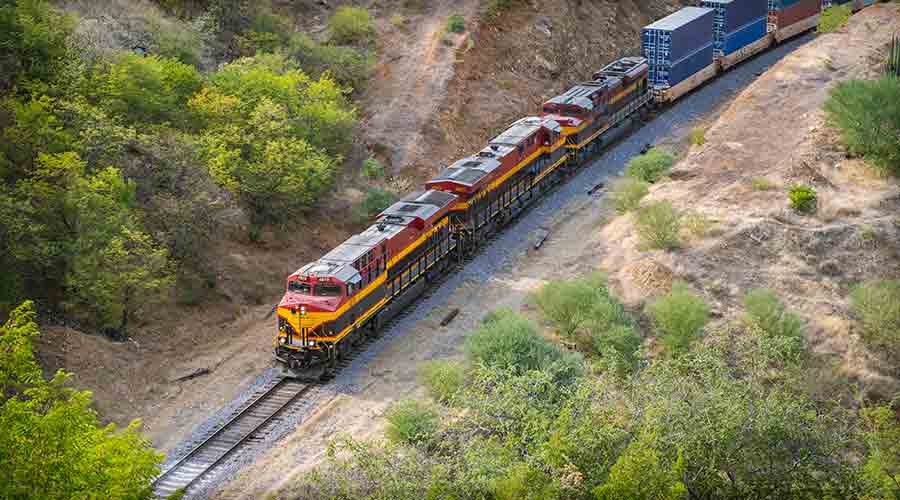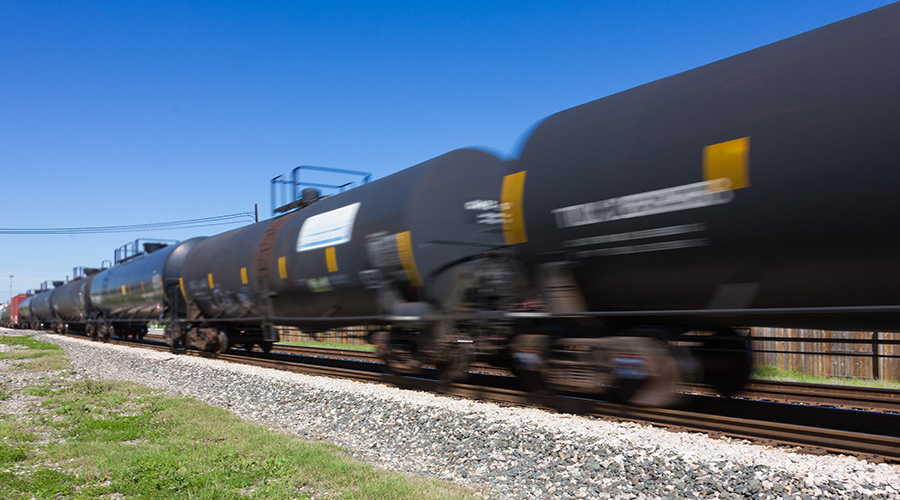Panel: Mexico's rail sector can capitalize on nearshoring trend
5/22/2023
By Julie Sneider, Senior Associate Editor
Nearshoring is the hot economic topic in Mexico these days, which is good news for the nation’s freight railroads.
That’s the message panelists delivered May 9 to attendees of the League of Railway Women’s (LRW) webinar on rail in Mexico. The event featured as moderator Linda Hernandez, an LRW board member and director of industrial development at Canadian Pacific Kansas City de Mexico; and panelists Iker de Luisa Plazas, director general of the Association of Mexican Railroads (AMF), and Luisa Fernandez-Willey, assistant vice president of policy and economics at the Association of American Railroads.
To explain why nearshoring — the relocation to North America of manufacturers whose production facilities had been in Far East Asia — is trending in Mexico, De Luisa gave an overview of the country’s rail system. On the freight side, there are two Class Is: Grupo Mexico Transportes and CPKC de Mexico, formerly Kansas City Southern de Mexico until its parent combined with Canadian Pacific on April 14. The nation also is home to four short lines and regional railways, as well as Tren Maya, a mostly passenger railroad now under construction that will also haul freight.
 LRW Board Member Linda Hernandez is director of industrial development at Canadian Pacific Kansas City de Mexico. Linda Hernandez/LinkedIn
LRW Board Member Linda Hernandez is director of industrial development at Canadian Pacific Kansas City de Mexico. Linda Hernandez/LinkedIn On the passenger side, Mexico’s system consists of six transit agencies and three tourist trains, including Tren Maya. Also under construction is the intercity Mexico-Toluca commuter-rail line.
Moreover, Mexico is home to a variety of rail-industry suppliers, including locomotive, freight and passenger rail-car manufacturers and crosstie producers.
“We not only have manufacturing strength, but also the commercial arm of sales that represent a number of U.S., Canadian and European companies and their products,” De Luisa said.
A ‘unique and powerful’ integration
Mexico’s rail industry follows the same standards and practices as do its U.S. and Canadian counterparts through entities such as AREMA, AAR’s Railinc Corp. and the Umler System. For that reason, the cross-continental integration of North American railroads and related businesses is “unique and powerful,” said De Luisa.
“This integration is incredible and unique worldwide,” he added.
That integration — combined with international geopolitical uncertainty, soaring shipping rates, prolonged COVID-19-related shutdowns in China and other supply-chain disruptions — helps boost nearshoring in Mexico, he said.
So will two recent events: the merger of Canadian Pacific and Kansas City Southern, which created the first single-line railway connecting Canada, the United States and Mexico; and the recent launch of Falcon Premium, a Canada-U.S.-Mexico intermodal service run by CN, Union Pacific Railroad and Grupo Mexico, De Luisa said. The United States-Mexico-Canada Agreement, which went into effect July 1, 2020, also helps.
Not all economic news is rosy for Mexico — it’s likely to face an economic slowdown in 2023; and inflation, while still falling, remains high. But many economists see nearshoring as a bright spot this year, AAR’s Fernandez-Willey said.
U.S. companies are choosing Mexico when moving their operations or production from overseas as they look for manufacturing hubs closer to home. Within North America, the U.S. labor shortage makes Mexico an even more appealing location, she said.
 The integration of North America’s freight-rail systems “is incredible and unique world-wide.” — Iker de Luisa Plazas, Association of Mexican Railroads League of Railway Women
The integration of North America’s freight-rail systems “is incredible and unique world-wide.” — Iker de Luisa Plazas, Association of Mexican Railroads League of Railway Women Another indication of the nearshoring trend: Foreign investment is on the rise, Fernandez-Willey said. In 2021, foreign direct investment in Mexico rose to $31.4 billion in 2021 from $28.2 billion in 2020 and reached $32.1 billion during 2022’s first nine months — the most for the period since 2013, she said, citing figures from The Wall Street Journal.
Rail infrastructure investment is key
The interest in nearshoring will require infrastructure investment, and a few big projects underway should help expand rail’s currently “tiny” share of freight shipped into and out of Mexico, Fernandez-Willey said. [Editor’s note: For example, of the $64 billion worth of freight shipped between the United States and Mexico in January 2023, $7.5 billion was moved by rail and $44.7 billion was moved by truck, according to the U.S. Bureau of Transportation Statistics.]
Among those key projects is the 300-kilometer Tehuantepec Isthmus rail corridor, a freight line the Mexican government is rehabilitating to connect the Pacific and Gulf coasts. The project’s aim: to create faster passage between the Pacific and Atlantic coasts, making the rail corridor a competitive alternative to shipping via the Panama Canal. The project calls for 10 industrial parks to be built along the corridor by 2023’s end; the government expects the line to be operational sometime this year.
 “Rail infrastructure projects are very critical to global competitiveness.” — Luisa Fernandez-Willey Luisa Fernandez-Willey/LinkedIn
“Rail infrastructure projects are very critical to global competitiveness.” — Luisa Fernandez-Willey Luisa Fernandez-Willey/LinkedIn Another key project is the new International Railroad Bridge spanning the Rio Grande from Laredo, Texas, to Nuevo Laredo, Tamaulipas. Kansas City Southern broke ground on the structure in fall 2022. It’s being built alongside the existing bridge and is estimated for completion by year-end 2024.
The new bridge will double rail capacity and allow trains to operate in both directions simultaneously.
“Rail infrastructure projects are very critical to global competitiveness,” Fernandez-Willey said.
Wanted: More women to fill roles in rail
CPKC’s Hernandez gave a plug to recruiting more women into Mexico’s rail business and into LRW membership. As of 2021, women represented about 11% of Mexico’s 13,860 freight-rail employees.
To demonstrate the group’s longtime presence in Mexico, she showed a two-page League of Railway Industry Women (the group’s former name) advertisement published in a Mexico rail industry magazine in 2002.
Last month at Exporail 2023, which is Mexico and Latin America’s major rail conference, the LRW kicked off an effort to further expand its presence in Mexico.
“We are in the process of creating an educational agenda over the year,” Hernandez said. “We are committed to supporting the LRW mission — and Mexico is not the exception.”


